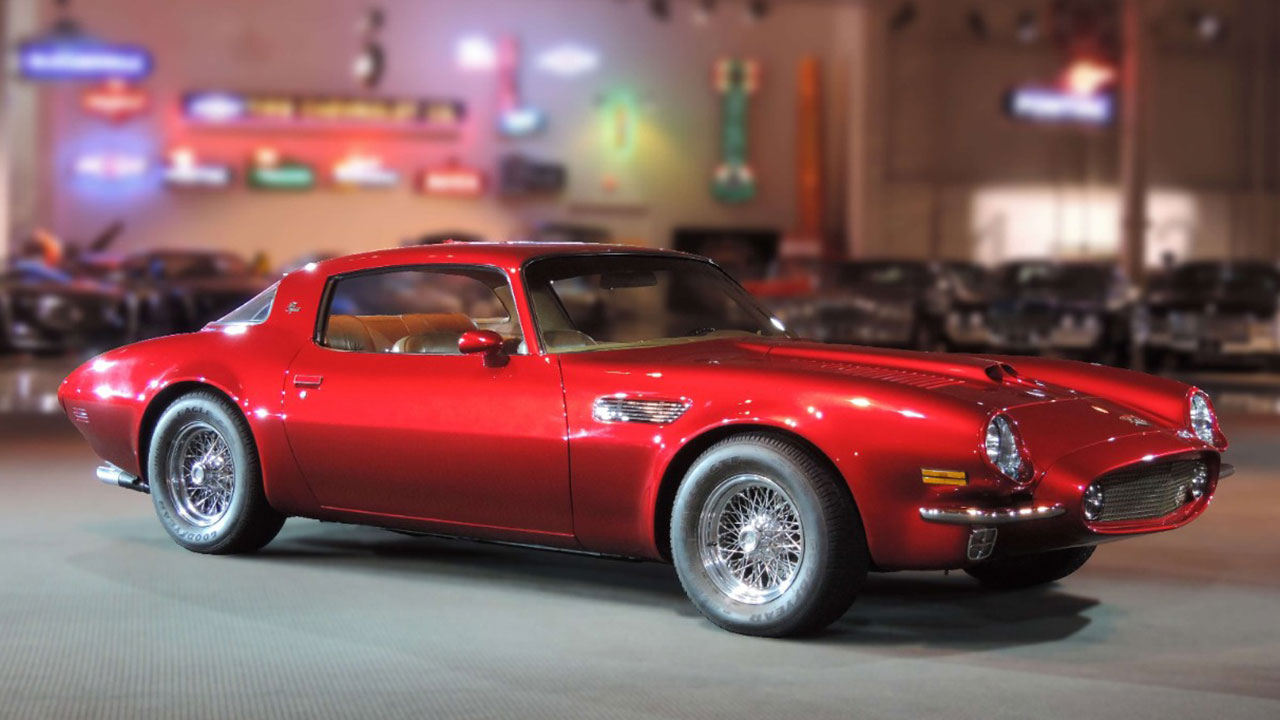
In the late 1970s, General Motors embarked on a daring venture to redefine Pontiac’s performance image. The project, known as the Pontiac Pegasus, was a one-off supercar prototype boasting a Ferrari V12 engine. This ambitious endeavor aimed to bring European exotic car performance to the American market. However, despite its promising start, the Pegasus was ultimately grounded by corporate politics and fuel crises, fading into automotive history.
The Pontiac Pegasus: A One-Off Dream
The Pontiac Pegasus was conceived in 1977 as a bespoke supercar prototype. General Motors envisioned it as a halo vehicle, a testament to their advanced engineering capabilities. The Pegasus was more than just a concept; it was a bold statement of intent, a declaration that Pontiac could compete with the best in the world. However, despite its potential, the Pegasus never made it past the prototype stage due to shifting corporate priorities.
The Pegasus was built on a Firebird-derived chassis, which underwent significant modifications to accommodate the Ferrari powerplant. The vehicle featured a custom fiberglass body and a mid-engine layout, a departure from the traditional front-engine design of the Firebird. The single prototype was completed in 1978 at Pontiac’s engineering center, marking the end of the Pegasus’s short-lived development.
Sourcing the Ferrari V12
The heart of the Pegasus was a 4.4-liter Ferrari V12 engine, sourced from the 365 GT4 BB. The engine was slightly detuned to meet American emissions standards, but it still managed to deliver an impressive 360 horsepower. Integrating the Italian engine into the GM platform was no small feat, requiring custom mounts and transmission adaptations. The result was a domestic package that offered supercar performance, far surpassing the capabilities of the era’s Trans Am models.
The Ferrari V12 had the potential to “change Pontiac forever,” but unfortunately, this potential was never realized. Despite the engineering prowess demonstrated in the Pegasus, the project was ultimately shelved, leaving the world to wonder what could have been.
Development at GM’s North Hollywood Shop
The development of the Pegasus was spearheaded by Pontiac’s advanced engineering team in California. Under the leadership of figures like Bill Hoglund, the team worked tirelessly to bring the Pegasus to life. The body of the Pegasus was fabricated from lightweight materials, a testament to the team’s commitment to performance.
In 1978, the Pegasus underwent testing phases, achieving top speeds over 160 mph on closed courses near Los Angeles. Despite these promising results, the project was shrouded in secrecy, with the vehicle stored in GM warehouses post-testing to avoid internal rivalries.
The Firebird Connection and Platform Choices
The Pegasus was built on the third-generation Firebird platform, utilizing its rear-wheel-drive architecture as a cost-effective base for the supercar. GM engineers relocated the engine behind the seats, drawing inspiration from European mid-engine designs while retaining Pontiac styling cues. The result was a vehicle that could accelerate from 0-60 mph in under 5 seconds, effectively a Firebird on steroids.
Reasons for Cancellation and Obscurity
The Pegasus project was halted in the wake of the 1979 fuel crisis and the introduction of Corporate Average Fuel Economy (CAFE) regulations. The Ferrari V12, while powerful, was also fuel-thirsty, conflicting with GM’s efficiency mandates. Internal GM politics also played a role in the project’s cancellation, with opposition from Chevrolet divisions fearing brand cannibalization.
Following its cancellation, the Pegasus prototype was dismantled in the early 1980s, and its parts were scattered. Today, the Pegasus is largely forgotten, a relic of a bygone era of automotive ambition.
Modern Echoes in One-Off Supercars
While the Pegasus may be a forgotten dream, the allure of bespoke vehicles lives on. Ferrari’s recent 2025 F40 tribute, a custom one-off built to celebrate the iconic model’s legacy, is a testament to this enduring appeal. Unlike the Pegasus, Ferrari’s tribute succeeded, largely due to the brand’s unwavering focus on performance and exclusivity.
The V12 engine, a hallmark of the Pegasus, continues to captivate automotive enthusiasts. Contemporary homages to this engine configuration could have paralleled Pontiac’s ambitions, had the Pegasus project been realized. Despite its obscurity, the Pegasus serves as a reminder of a time when American automakers dared to dream big, pushing the boundaries of performance and engineering.
More from MorningOverview